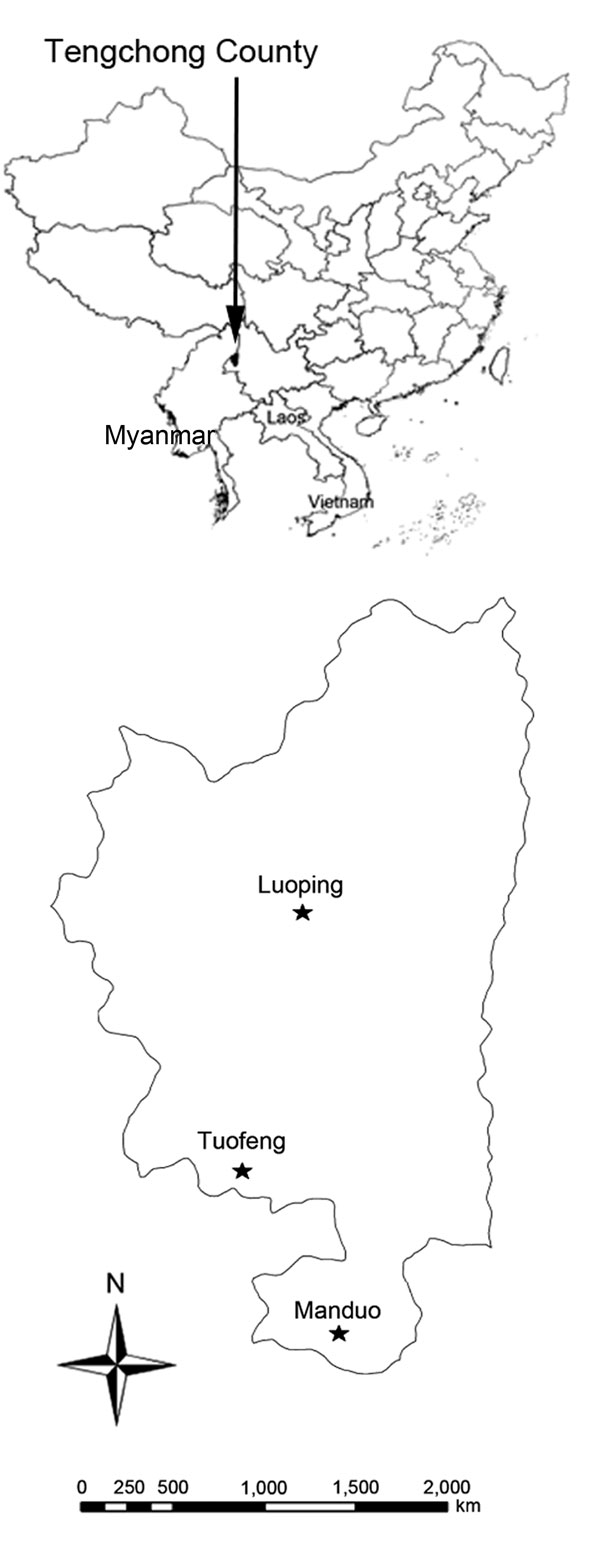Volume 21, Number 10—October 2015
Dispatch
Transmission Risk from Imported Plasmodium vivax Malaria in the China–Myanmar Border Region
Figure

Figure. Location of 3 villages in Tengchong County, Yunnan Province, China, in which study of transmission risk from imported Plasmodium vivax malaria was conducted. Inset shows location of Tengchong County along the China–Myanmar border.
1These authors contributed equally to this article.
Page created: September 22, 2015
Page updated: September 22, 2015
Page reviewed: September 22, 2015
The conclusions, findings, and opinions expressed by authors contributing to this journal do not necessarily reflect the official position of the U.S. Department of Health and Human Services, the Public Health Service, the Centers for Disease Control and Prevention, or the authors' affiliated institutions. Use of trade names is for identification only and does not imply endorsement by any of the groups named above.